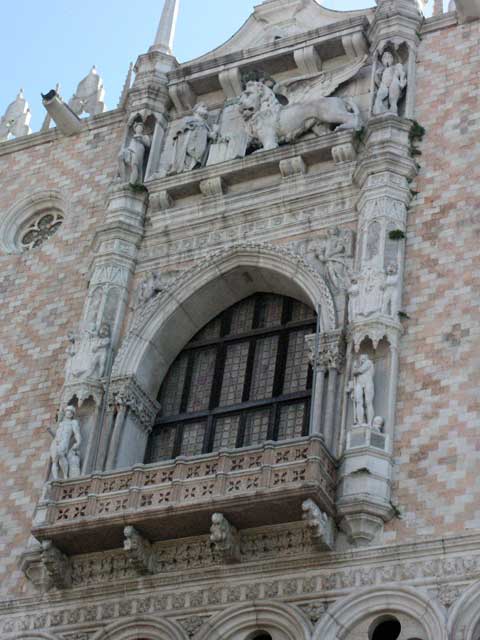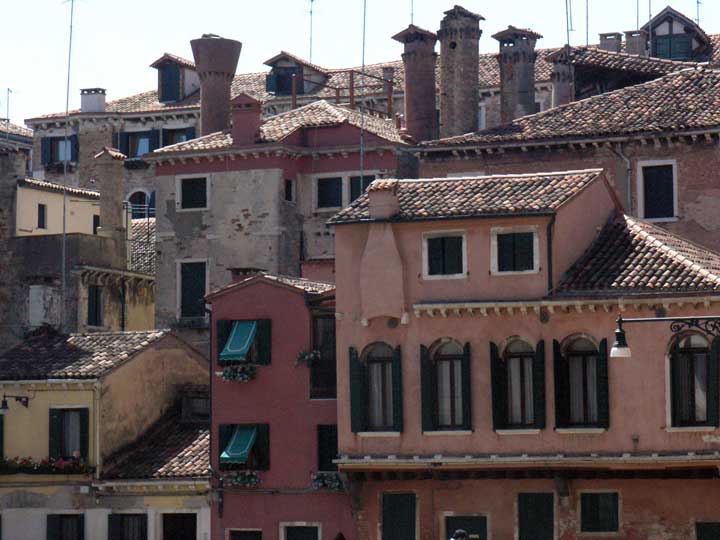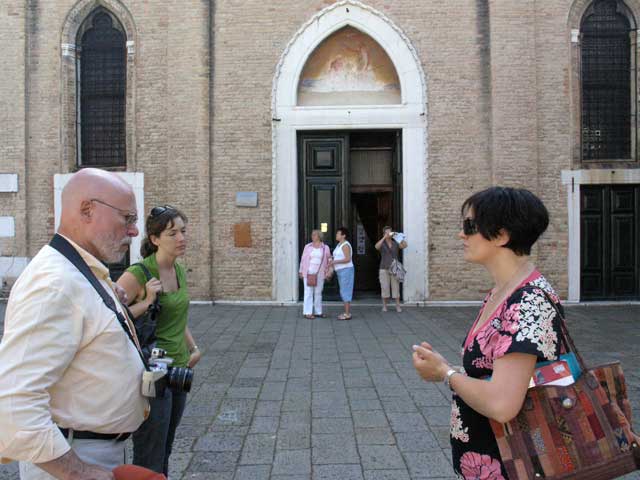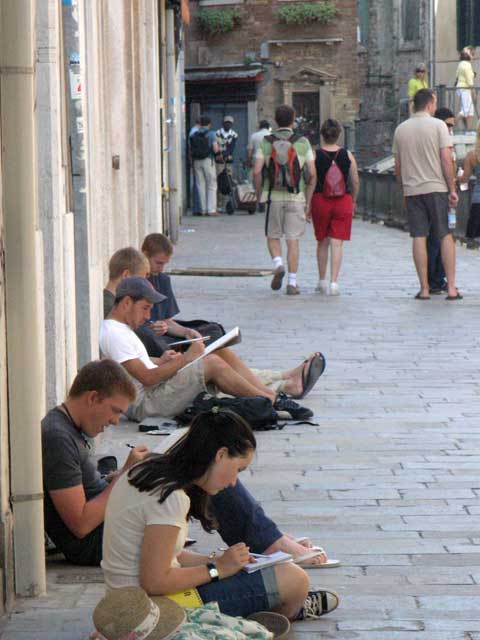
A balcony on the Doge's palace with the winged lion of St. Mark.

Today we took one of the Context Travel I had arranged for our stay in Venice on Early Renaissance Art (1475-1525). We met our guide, Louisa Warman, in front of Santa Maria di Visitazione on the fondament (waterside street) facing the lagoon. We were joined by one other guest, a young woman from North Carolina.
Our tour started outside San Giovanni in Bragora. Inside the church, Louisa discussed the church architecture, and changes to it as a result of the Council of Trent which removed a number of barriers between the ecclesiastical space and the public space in the church. (Jonathan notes that while Louisa viewed the Council of Trent as a democratization of the church, it is being used in the opposite fashion today.) The main feature artistically that she discussed was the altarpiece painting that represented a transition out of the Byzantine style – a gold leaf background to illuminate the word of God – to the Renaissance style using pastoral landscapes to fill the background. The painting was of St. John the Baptist baptizing Jesus, with the typical symbology in the paintings – a representation of God the Father at the top, a dove for the Holy Spirit, and Jesus the Son all on the central vertical axis of the piece.
The church also had the bones/relics of St. John the Almsgiver, apparently a major figure in the Eastern Church. There were about 30 folks crowded around the side chapel where the saint lies in repose as priest celebrated mass with the Eucharist. Louisa pointed out a couple more classical gold-backed Byzantine pieces before we departed the church.
We next went to Chiesa di San Zaccaria where we viewed a painting of the Virgin and Child showing some classic Venetian columns (square, with ornamentation on each face), while the theme of the virgin was more “modern” or classic Renaissance which has simpler lines. The church was once part of a convent and had apparently great wealth in their day. The paintings were looted during World War II before being returned to the church. We went into the older part of the church to see some of the altarpieces which were heavily gilded and in the Byzantine style. We walked through the crypt below which was inundated with water that smelled of sewage. This church also has relics important to the Eastern Church as the group that was celebrating mass in the previous church was now in attendance in this church.
We moved on from there to the Scuola Dalmata delli Santi Giorgino e Triffon, which Louisa described as confraternity [founded 1451] who shared origins on the Dalmatian coast across the Adriatic from the city. This was a gem that we wouldn’t have discovered on our own. The paintings by Carpaccio featured the story of St. George slaying the dragon and St. Trifone, an obscure patron saint of the eastern Adriatic who is usually depicted as a child or adolescent wearing red hose. St. Trifone supposedly had a talent for exorcising demons.

Louisa discussing the architechure of the buildings with Jonathan and Lindsay prior to entering the church.

And across the canal, an art class was busily sketching and water coloring renditions of the structure.
This concluded our Context Travel tour and we adjourned to a café – the four of us – to chat a bit more before we went our separate ways. Jonathan and I wandered around a bit in the Castello district east of St. Mark’s as we didn’t want to go into the touristy areas to look for lunch. We found a place where we had a lunch of pannini and foccaccia sandwiches before returning to the hotel to nap.
We went to the train station to look for train schedules to figure out our travel to Ravenna the next day. We didn’t have much luck there, instead stopping by an internet café where I was able to get the information we needed. Back at the hotel, we’ve gotten an apertif of Negronis (which are OK, but I don’t think I’d order one again) and caught up on our journals.
Afterwards we went out seeking a simpler, more modest repast, settling on a pasta and pizza joint not far down the street. We shared a caprese, while Jonathan had a pizza (diavolo I think), I had spaghetti Bolognese.